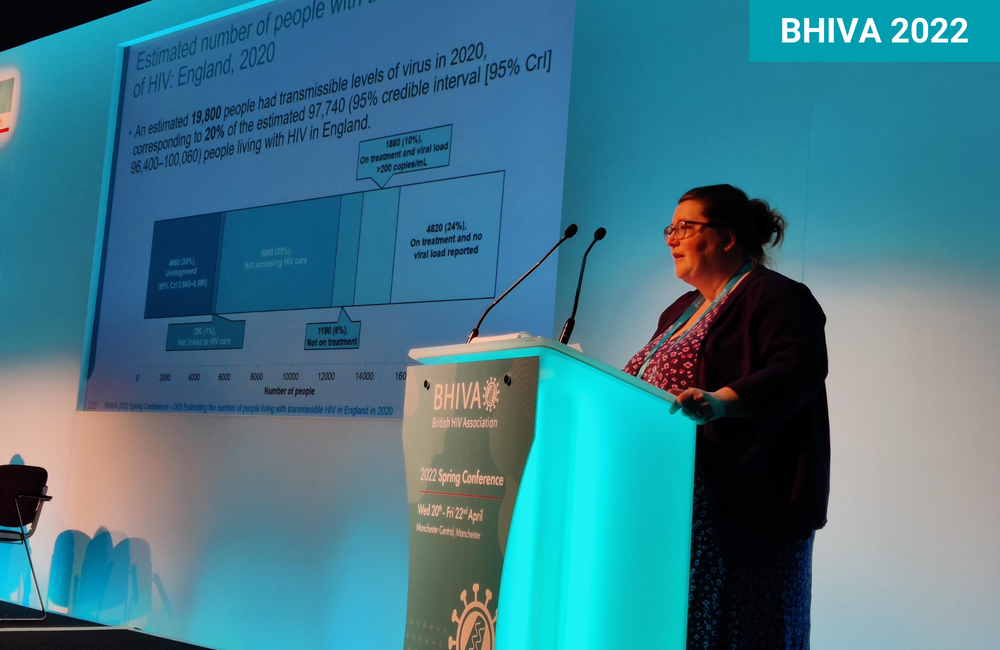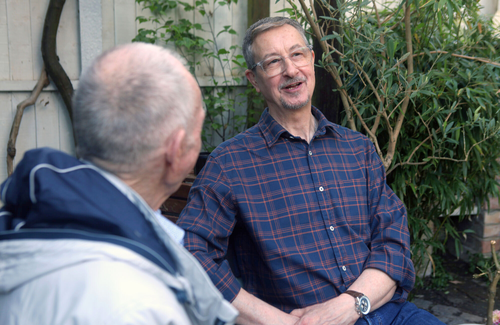
A model using updated HIV surveillance figures from England had found that at least one in seven people with HIV in England, and possibly as many as one in five, has a detectable and transmissible HIV viral load, compared with a previous estimate of less than one in ten. This is partly due to the effects of the COVID pandemic, the British HIV Association (BHIVA) conference heard yesterday in Manchester.
Background: 90-90-90
The 90-90-90 target is an aspirational target launched by UNAIDS in 2014. It aims for 90% of a country’s population of people with HIV to be diagnosed, 90% of those diagnosed to be in care, and 90% of those in care to have an undetectable viral load. This would mean that just under 73% of all people with HIV would be virally suppressed, so could not transmit the virus.
The UK was one of the first countries to achieve 90-90-90, doing so by 2017. In its 2021 report, the UK Health Security Agency (UKHSA) said that in 2020, in England at least, UNAIDS’ updated 2030 target of ’95-95-95’ – implying 91% viral suppression amongst all people with HIV – had already been achieved, a decade early.
However, UKHSA’s Dr Alison Brown warned the BHIVA conference that this estimate was a "somewhat rosy picture".
The 9% viral non-suppression figure assumes that once diagnosed and linked to care, people stay in care – and that if they do stay in care, continue taking treatment and remain virally suppressed.
Dr Brown said that a worst-case scenario, in which neither of those are true, could mean that up to 20% of people with HIV in England might in fact have an unsuppressed viral load and therefore both be in danger of progressing to AIDS and of transmitting HIV.
“The truth is probably somewhere in between,” Dr Brown told aidsmap.com. “At a guess, possibly one in six to one in seven people may be virally unsuppressed.”
She added that the uncertainty around the true figure had been magnified by COVID – not just because fewer patients were being seen for in-person appointments, but also because fewer viral load tests were being ordered.
Who’s not virally suppressed: the latest estimate
UKHSA estimates that there are 97,740 people living with HIV in England (the fact that these figures are for England alone is more evidence of the damage COVID has done to surveillance reporting between the four UK nations).
Of these, it estimates that 19,800 people, or just over 20%, may have had transmittable levels of HIV during 2020.
Of this 20%, 4660 (5% of all people with HIV) are undiagnosed. This figure is about the same as in the 90-90-90 calculation and is thought to be pretty reliable; it is based on the ratio of positive HIV tests to the overall number of tests, and, in gay men, also on the ratio of those recently infected to all those who test positive.
A tiny number – 290, or another 0.3% – are not linked to HIV care at all, maybe through failure to attend, maybe by some oversight of test reporting. Another 1190 or 1.2% are linked to care but not on treatment – they could be yet to start, or they are non-progressors who do not need therapy. And another 1880 or 1.9% are on treatment but have a viral load above 200. These could be people experiencing treatment failure, but could also be people who have recently started treatment.
This adds up to 8.4%, which is nearly the 9% that is the 90-90-90 figure for people who are not virally suppressed.
However, UKHSA has also found two other, larger groups of people who may not be virally suppressed. Firstly, Brown and colleages recognised that there were people recorded as linked to care who had not actually attended for an appointment in the previous two years.
They recognised that many of these were duplicate records – patients registered at one clinic who had then moved to another area clinic. Some had died. Others, harder to trace, had moved abroad.
But even eliminating as many of these cases as possible left 6960 people – over 7% of all people living with HIV – not attending for care in the last two years.
This total was twice as high as the pre-2020, pre-COVID estimate of 3600.
Barring the odd undetected duplicate or person who had left the country, the large majority of these people would not have received antiretroviral therapy and would not be virally suppressed. This takes us up to 15.4% of people living with HIV with a transmissible viral load.
There was one more group. A surprisingly high number of people – 4820, or 5% of all people with HIV – were listed as having attended a clinic but not having had a viral load test. This makes more sense if you realise that phone assessments during lockdown were categorised as ‘attendances’ and that at times COVID testing was being prioritised for laboratory time.
This 5% could be an overestimate of the numbers with transmissible HIV, because these are people who were receiving antiretroviral therapy (ART) even if they had not had a viral load test. However, it doesn’t include people who had had an undetectable viral load test in 2019 but not since. It only includes people who had not had a viral load test result recorded for at least two years.
Even so, studies of the long-term risk of ART failure find that while 16% may fail to remain virally suppressed in their first year, by the time they have been on ART for seven years or more the risk of failure declines to less than 2% a year. And whereas the majority of the undiagnosed were in younger age groups (15-45), the majority of those without a recorded viral load were older (aged 45-60), which may suggest that some of them were on stable treatment.
If treatment had stopped working for all of them, this would take us up to 20.4% of people with HIV in England having a transmissible viral load. But even if we remove that last group, this still means that at least 15% of people with HIV in England are not undetectable, compared with the 90-90-90 figure of less than 10%.
Overall, the highest proportion of people with a transmissible viral load is people who have dropped out of care altogether. They are also predominantly middle-aged and evenly split between gay and bisexual men and black African women. Tracing these vanishing patients is a priority of the Department of Health’s HIV Action Plan for England 2022-2025 – which includes the previous, pre-pandemic estimate for the proportion virally unsuppressed.
The results of a project at three large HIV clinics in south London to trace such patients and re-engage them in care were also presented at the BHIVA conference, and will be reported separately.
Martin V (presenter Brown A.) Estimating the number of people living with transmissible HIV in England in 2020. British HIV Association Spring Conference 2022, Manchester, abstract no O05.

